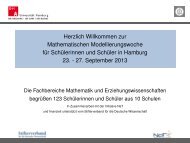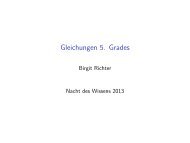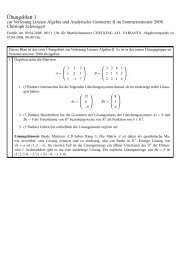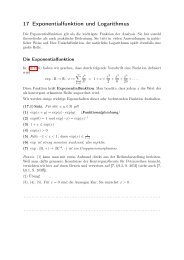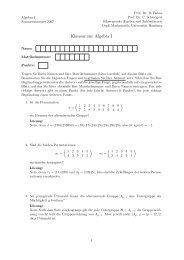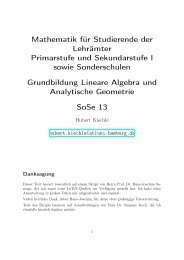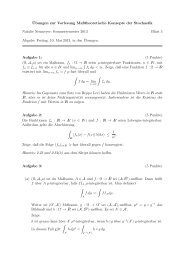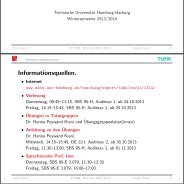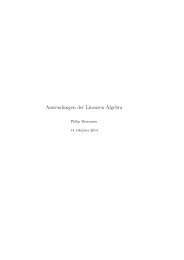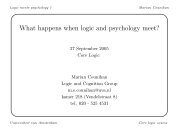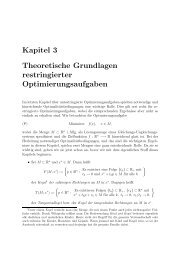pdf file
pdf file
pdf file
You also want an ePaper? Increase the reach of your titles
YUMPU automatically turns print PDFs into web optimized ePapers that Google loves.
• For the algebra structure on H, we use the monoidal structure on the functor Φ: consider<br />
which is an element in<br />
m U,V : Φ(U) ⊗ Φ(V ) ∼ = Φ(U ⊗ V ) δ U⊗V<br />
−→ Φ(U ⊗ V ) ⊗ H<br />
∼ = Φ(U) ⊗ Φ(V ) ⊗ H<br />
Nat (Φ 2 , Φ 2 ⊗ H) ∼ = Hom(H ⊗ H, H) .<br />
This gives an associative product with unit element<br />
η : K ∼ = Φ(I)<br />
δ I<br />
−→ Φ(I) ⊗ H ∼ = H .<br />
• In a similar way, one uses the duality on C to obtain an antipode on H and shows that<br />
H becomes a Hopf algebra.<br />
• One finally shows that H−mod ∼ = C as monoidal categories.<br />
✷<br />
Remark 5.2.4.<br />
Deligne has characterized [D, Theorem 7.1] those K-linear semisimple ribbon categories over<br />
a field K of characteristic zero that admit a fibre functor: these are those categories for which<br />
all objects have categorical dimensions that are non-negative integers.<br />
5.3 Knots and links<br />
Definition 5.3.1<br />
1. A link (German: Verschlingung) in R 3 is a finite set of disjoint smoothly embedded circles<br />
(without parametrization and orientation).<br />
2. A link with a single component is called a knot.<br />
3. An isotopy of a link is a smooth deformation of R 3 which does not induce intersections<br />
and self intersections.<br />
4. A framed link is a link with a non-zero normal vector field.<br />
Links in the topological field theories of our interest are framed oriented links.<br />
Examples 5.3.2.<br />
1. A special example is the so-called unknot which is given by the unit circle in the x-y-plane<br />
of R 3 .<br />
2. Other important examples of well-known knots and links:<br />
trefoil knot<br />
Hopf link<br />
126




